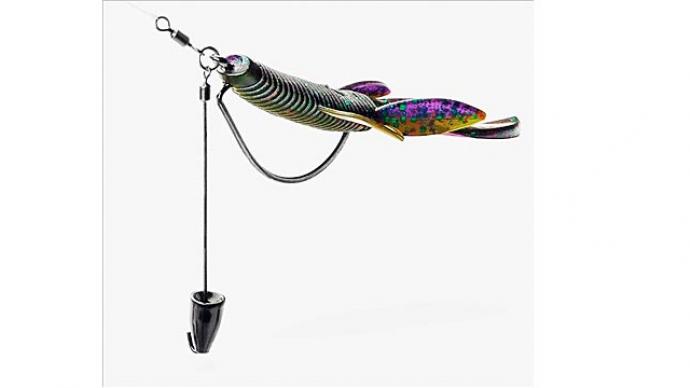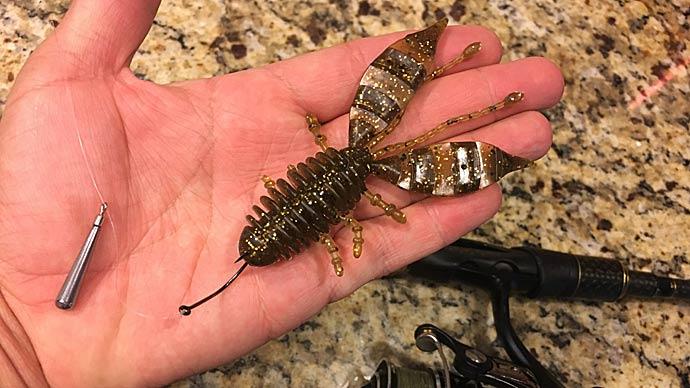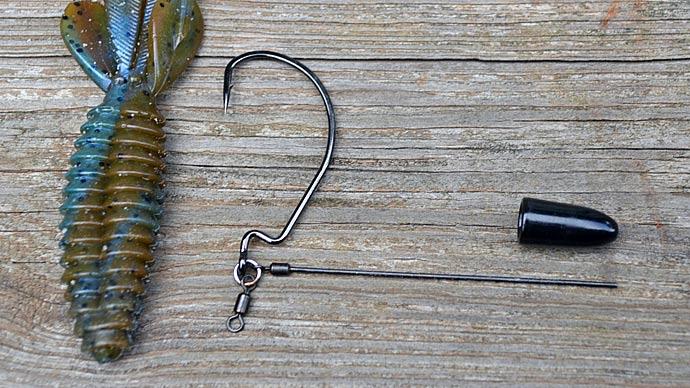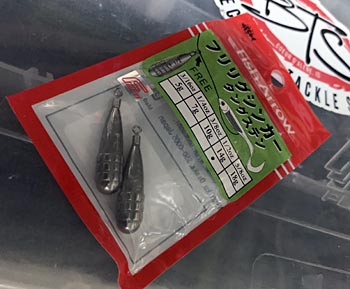
Over the past few years, a new way to fish soft plastics has arrived. The Free Rig, as it is known, is a versatile yet straightforward method for bass fishing. One angler who has been using it with success here in the United States is Major League Fishing pro Shinichi Fukae.
He says it is a mix between a Texas-Rig and Carolina-Rig, works just about everywhere, and is poised to be the next big thing in American bass fishing.
What Is "The Free Rig"?
The Free Rig is a simple way to fish a soft-plastic bait. All that is needed is a weight with an enclosed section to run your line through. As the technique has gained popularity, companies such as the Japanese brand Fish Arrow have developed specialized tungsten weights for the method. Still, in theory, a simple bass casting sinker will suffice.
Once your line passes through the enclosure, you can rig up any hook and soft plastic combination you desire. The hook's free movement and plastic make it so effective. This is also how the rig gained its name.
Fukae said he was first made aware of the rig a few years ago and has found many different situations where it works.
"It started in Korea, and then anglers in Japan started to use it. It is straightforward to rig, and they tend to drop-shot less in Korea, and I believe that was how it started," Fukae said. "It catches fish in many of the same situations."
He was tipped off to it by one of his sponsors, Fish Arrow. "They learned about it and told me," said the Japanese pro. "It is easy to rig, and you can fish it everywhere. I've been using it since I learned about it," said Fukae.
As the rig falls, the weight will be first to arrive at the bottom, and your soft-plastic will fall with unique free-flowing action. Fukae has used the rig extensively and experimented with varying weight sizes and plastic baits to further affect the action. Through fishing, he's learned there is no wrong way to do it.
When and Where to Free Rig
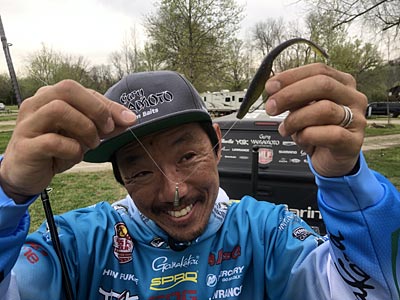
As Fukae mentions, the rig's versatility is part of what makes it so useful.
"The depth you are fishing doesn't matter, and it can be used super shallow to deep. I think some of the best times are in open water around grass and on rocky points," said Fukae. "The weight hits bottom fast, and the bait falls behind it, almost like a Carolina-Rig without the weight pulling it down as quickly. The free action of the bait is what makes it so good."
Fukae said it is also a good approach when sight-fishing and around docks but not under them. "The only hard thing to do with it is skipping it. It is mainly an open-water technique," he shared.
As a general rule, Fukae said that the deeper he is fishing, the more methodically he will fish it. "You get a slower fall from the bait the deeper it is, and most of the time I am fishing it, it is ten feet or deeper," said Fukae.
Free Rig Gear
The beauty of this rig is that any weight, soft-plastic, and hook combination can be used. That being said, Fukae does have some favorites.
"I use the ¼-ounce size the most, but many anglers in Japan are using much lighter weights because the bait will fall much slower in the water," he said. "I use all types of plastics, from a creature bait to a Yamamoto Senko. You can use whatever you want."
Another of his favorite soft plastics is a soft plastic jerkbait like the Yamamoto D-Shad. These baits have an erratic and fish-catching action to begin with, but Fukae says that it is heightened when added to a Free Rig.
He will also adjust his rigging to gain different fall rates. "I normally Texas-Rig, but with a wacky-rig a bait like a Senko, you can get an even slower fall," shared the Major League Fishing pro. "Sometimes, that is what they want."
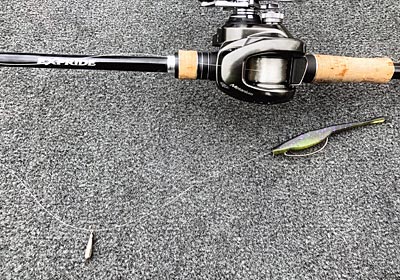
Most of the time, Fukae will fish the Free Rig on baitcast gear even though it is not required. His preferred method is a 7' to 7'2" medium baitcast rod paired with a reel spooled with fluorocarbon line.
Fukae prefers a Shimano 7'2" Medium Heavy rod with a Shimano Metanium MGL reel spooled with 12 or 15-pound YGK G-Soul FC Tour Grade fluorocarbon line.
Fishing the Free Rig
When utilizing the Free Rig, much of the action is imparted during the initial fall as the bait slowly flutters behind the weight. Fukae has learned that he can replicate this action during his retrieve to get more bites.
"I like to fish it with an 'up and down' retrieve as I move it along the bottom, where I lift the rod and let it fall back down. I do that all the way back to the boat," he shared.
Many of the bites will occur right away, so be ready. "When the weight is going to the bottom fast, the fish will get the bait right when the plastic is following behind it. That is the best time," said Fukae.
The Free Rig is the latest in a long line of techniques to originate in Asia and slowly begin to infiltrate the tackle boxes of American anglers. Shin Fukae says it could very well be the next drop-shot rig because it works well. Time will tell if it can become that popular, but it will surely catch more bass as more anglers give it a shot.
BassResource may receive a portion of revenues if you make a purchase using a link above.


